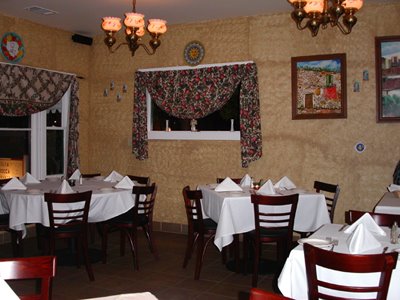 The Bus Stop
The Bus StopMy favorite bar in San Francisco has to be the Bus Stop at the corner of Union and Laguna Streets. It’s a really fun spot that attracts two very different types of crowds, one during the day and another at night. When the sun is shining, The Bus Stop crowd is comprised primarily of locals and working stiffs like firemen, teachers, nurses, cops and plumbers. There is also a group of retired old-timers that come in there during the day. These folks are great to talk to and love to engage other patrons in conversations about everything from sports to movies to politics, even religion. As long as you don’t cuss or get too loud, nothing is taboo at The Bus Stop when it comes to verbal communication. I have walked in on many public debates there, about topics like “Why do the 49ers stink?” to “Did Barry Bonds use steroids?” or “Why the hell can’t we catch Bin Laden?” The week day bartender there is Paulie (pictured above), a San Francisco legend in his own right. He’s originally from Boston, which means The Bus Stop is more of a Boston Red Sox bar than a SF Giants bar. But, Paulie will talk intelligently about pretty much anything that’s on your mind. One of the great things about the man is that he’s also a great listener, something that’s so important with bartenders. I am so tired of bartenders who hog the conversation or don’t care what you have to say. Paulie is the antithesis of this – he’s almost like a very good psychiatrist. He really seems to care about his patrons and I know he does. At night, The Bus Stop transforms into yuppie paradise. The hot chicks come into the place in droves, which of course attracts all of the 20-something male wannabe players from all over the Bay Area. The babes with fake boobs show up in their finest fashion show outfits wearing enough high-priced perfume to make us forget about Chernobyl. They do their very best to ignore all of the guys in the room, until of course they meet the one they want to go home with, at which point they get catty competing with the other hoochies in attendance. It’s very similar to the way moose or lions hook up, except for the credit cards and the Jaegermeister. Watching this mating ritual every single evening gets tiresome, so I go in there after dark only when I have friends in town or if there’s a particularly good baseball or football game I want to watch in a fun atmosphere. The bartenders at night are Ron, Jason and Rick, who are seasoned professionals and really interesting guys. The Bus Stop doesn’t serve food, but they don’t mind if you bring your own in there, either. There are a ton of good restaurants nearby that will deliver grub to you right there. They have two pool tables in the back and approximately a dozen flat screen, high definition TV’s throughout the place. They are also really good at accommodating people who make requests to watch certain games. The Bus Stop has a great Happy Hour every week day after 4 pm, with some very generous drink specials and they have about 10 beers on tap. This bar is one of the oldest and most popular drinking establishments in the city and many people have been coming there for more than 40 years. Their motto is, “A place where friendships are formed to last a lifetime.” And I would add to that, “And where hangovers are created every day.”












